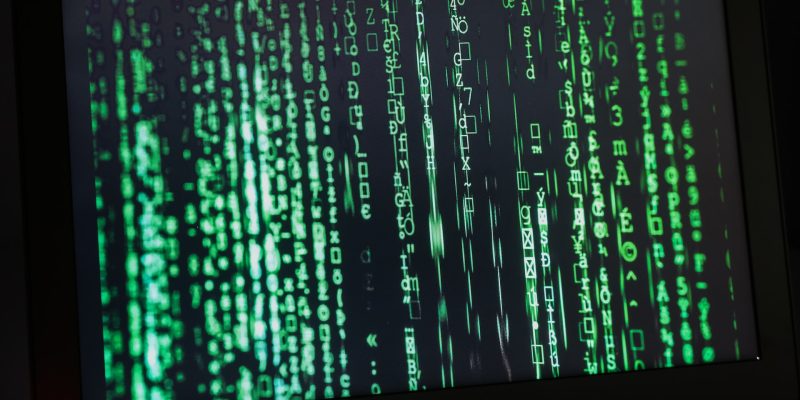Firewalls are one of the first lines of defense against digital threats in the evolving field of cybersecurity. Let’s explore the methods, benefits, and distinctions of the two main types of firewalls – Packet Filtering and Stateful Inspection. Understanding these concepts will enable you to make informed decisions in fortifying your digital defenses.
Introduction to Firewalls: The First Line of Defense
A firewall is a network security device or software used in networks to control, monitor, and filter incoming and outgoing traffic between a computer network and other networks or the broader internet. A firewall’s primary function is to create a barrier between trustworthy internal networks and potentially unreliable external networks, such as the Internet, to safeguard the internal network from unauthorized access, cyber threats, and malicious activities.
Understanding Packet Filtering: How Does It Work?
Let’s examine packet filtering, one of the fundamental firewall types. Data packets travel the virtual roads in the vast world of digital communication just like cars do in the real one. Packet filtering serves as a vigilant traffic officer by checking each packet for adherence to the network’s regulations.
At its core, packet filtering entails choosing whether to allow or deny a data packet access to a network. This choice is done in accordance with factors including the source and destination addresses, port numbers, and used protocols. The packet is allowed through if it satisfies the requirements; if not, it is blocked.
Benefits and Limitations of Packet Filtering
As a firewall technology, packet filtering has several benefits that improve network security. It does, however, have some limitations, just like any other technology. Let’s explore both facets to fully comprehend the effect of packet filtering on digital defense.
Benefits of Packet Filtering:
- Simplicity and Speed: Packet filtering operates quickly by examining specific attributes of data packets. This efficiency reduces processing costs and helps in preserving optimal network performance.
- Resource Efficiency: Packet filtering uses relatively fewer system resources in comparison to more complex techniques because it is based on predetermined criteria. This enables networks to accommodate higher traffic volumes.
- Traffic Control: Administrators can exert control over both incoming and outgoing traffic based on the rules they set up. Networks can therefore better utilize their resources by prioritizing and filtering traffic.
- Basic Attack Prevention: Packet filtering can stop a variety of simple cyber threats by blocking packets that don’t satisfy predetermined criteria. It serves as the first line of defense in the case of known malicious sources.
Limitations of Packet Filtering:
- Limited Contextual Awareness: Packet filtering lacks the ability to consider the context of traffic and instead bases choices on pre-established rules. This can result in false positives or negatives when dealing with more complex threats.
- Protocol-Based Filtering: Although successful against some threats, packet filtering may fall short against attacks that make use of unusual or complicated protocols. Such attacks might get past filters by taking advantage of filters’ reliance on specified protocols.
- Inability to Inspect Encrypted Content: Packet filtering cannot see encrypted data, making it difficult to detect possible threats buried within encrypted traffic.
- Dynamic IP Addressing Challenges: Dynamic IP addresses present a challenge for packet filtering, which can make managing and controlling network access difficult.
In summary, packet filtering provides a simpler method for controlling network traffic and averting common risks. Its shortcomings, however, highlight the need for more thorough methods, including stateful inspection, which we’ll explore next.
Grasping Stateful Inspection: The Mechanics Behind It
Stateful inspection, in contrast to packet filtering, which assesses individual data packets, adopts a larger perspective and takes data flows into account when making security decisions. It keeps track of active connections, examines data sent and received, and separates normal activity from possibly malicious ones.
Here’s how it works:
- Connection Initialization: Details of communication initiation are recorded, including addresses and sequence numbers.
- Monitoring Active Sessions: The firewall keeps track of data exchange while upholding current and expected states.
- Dynamic Rule Management: Stateful inspection adapts by establishing guidelines for authorized communication and preventing unexpected behavior.
- Connection Termination: The firewall ensures proper termination of interactions once they are finished.
Advantages and Drawbacks of Stateful Inspection
Stateful inspection, a reliable cybersecurity method, provides a range of advantages and factors that define its function in protecting digital domains, but it is not without its drawbacks.
Advantages:
- Contextual Awareness: Stateful inspection, as opposed to simple filters, understands the context of data flows and spots complex attack schemes that get beyond simpler defenses.
- Dynamic Adaptation: Stateful inspection constantly modifies its rules based on ongoing conversations to accommodate changing network activities and potential threats.
- Comprehensive Tracking: Stateful inspection improves the capacity to distinguish between normal and malicious behavior by keeping track of active connections and keeping a real-time record of device statuses.
Drawbacks:
- Resource Intensity: Stateful inspection requires greater processing resources in comparison to static filtering techniques.
- Encrypted Data Challenge: The complexity of decrypting encrypted content limits the method’s ability to spot threats buried in encrypted data.
- Resource Management: Balancing the benefits of stateful inspection against its resource requirements is essential for optimizing its implementation without compromising network efficiency.
Key Differences: Packet Filtering vs. Stateful Inspection
Understanding the differences between stateful inspection and packet filtering is essential for cybersecurity.
Packet Filtering: This method examines each data packet individually based on particular criteria. Although quick and easy, it might overlook complex threats.
Stateful Inspection: This method considers the wider picture by taking into account the context of data flows. Though more resource-intensive, it is superior at stopping complex threats.
You can choose among these two to get the best protection against cyber threats depending on the requirements and resources of your network.
How to Choose: Determining the Right Firewall for Your Needs
The choice of which firewall to use is crucial in the constantly changing world of cybersecurity.
Network-Based Firewalls: These work at the network perimeter and are ideal for securing entire networks. They provide centralized control, security from outside threats, and are efficient for handling numerous devices.
Host-Based Firewalls: Host-based firewalls excel when protecting individual devices is of the utmost importance. They are useful for remote or exposed endpoints since they are tailored to the needs of each device.
Stateful Inspection or Packet Filtering: The choice between these methods depends on your threat landscape and available resources. While packet filtering excels in its ease of use and effectiveness, stateful inspection is proficient at spotting complex threats.
Balancing Act: Take into account the size, network architecture, and data sensitivity of your organization. Comprehensive security can be achieved by combining host-based and network-based firewalls with a careful selection of filtering methods.
The best decision ultimately depends on matching your security approach with your particular operational requirements.
Looking Ahead: The Future of Firewall Technologies
The field of firewall technology will develop together with the digital environment. The future promises innovation in response to ever-advancing cyber threats. Machine learning and AI will probably play a key role in enabling firewalls to react in real time. Firewalls are poised to become even more dynamic, intelligent, and crucial for protecting our digital domains as a result of developing technologies.
Feature photo by Compare Fibre on Unsplash
DISCLAIMER: This article is a partnered post and does not substitute for professional advice or help. Any action you take upon the information presented in this article is strictly at your own risk and responsibility.






They keep track of the state of active connections and make decisions based on the context of the traffic, How to Create a Wikipedia Page for Yourself
geometry dash lite features many game levels, each with a unique combination of obstacles and soundtracks. You have to leap and soar through the course in order to dodge obstacles and move in sync with the music.